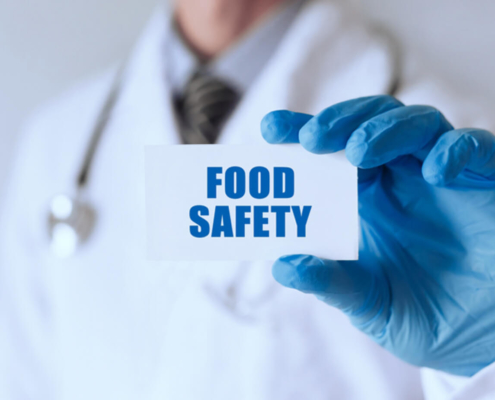Foodborn Illnesses
Many different disease-causing germs can contaminate foods, so there are many different foodborne infections. Researchers have identified more than 250 foodborne diseases. Most of them are infections, caused by a variety of bacteria, viruses, and parasites. These germs can be spread during the packaging process if the food products are not handled properly. Improperly cooking, preparing, or storing food can also cause contamination. Harmful toxins and chemicals also can contaminate foods and cause foodborne illness.
Properly handling, storing, and preparing food greatly reduces the risk of getting foodborne illnesses.
Common symptoms of foodborne diseases are nausea, vomiting, stomach cramps, and diarrhea. However, symptoms may differ among the different types of foodborne diseases. Symptoms can sometimes be severe and some foodborne illnesses can even be life-threatening. Although anyone can get a foodborne illness, some people are more likely to develop one. Those groups include:
- Pregnant women
- Young children
- Older adults
- People with immune systems weakened from medical conditions, such as diabetes, liver disease, kidney disease, organ transplants, HIV/AIDS, or from receiving chemotherapy or radiation treatment.
Most people with a foodborne illness get better without medical treatment, but people with severe symptoms should see their doctor.
Recommendations
The good news is that you can keep on top of bacteria and foodborne illness by playing it safe when buying, preparing, and storing food.
If your hands have any cuts or sores, wear gloves suitable for handling food or avoid preparing food. To reduce your risk of foodborne illness you should wash your hands thoroughly:
- Before and after handling any food
- After using the bathroom or changing diapers
- After touching animals
To avoid cross-contaminating food items you should:
- Wash all cutting boards and utensils with hot water and soap after preparing each food item.
- Separate meat, poultry, and seafood from other foods during preparation.
To reduce chances of food poisoning, you should:
- Cook food to the correct temperature. Check the temperature with an internal thermometer at the thickest point, never on the surface.
- Poultry, all ground meats, and all stuffed meats should be cooked to an internal temperature of 165°F (73.8°C).
- Seafood and steaks or chops or roasts of red meat should be cooked to an internal temperature of 145°F (62.7°C).
- Reheat leftovers to an internal temperature of least 165°F (73.8°C).
- Cook eggs until the white and yolk are firm. Fish should have an opaque appearance and flake easily.
- Refrigerate or freeze food promptly. Store food at the right temperature as quickly as possible after it is purchased. Buy your groceries at the end of running your errands rather than the beginning. Leftovers should be refrigerated within 2 hours of serving. Move hot foods into wide, flat containers so that they can cool down more quickly. Keep frozen foods in the freezer until they are ready to be thawed and cooked. Thaw foods in the fridge or under cool running water (or in the microwave if the food is going to be cooked immediately after thawing); never thaw foods on the counter at room temperature.
- Label leftovers clearly with the date they were prepared and stored.
- Never cut mold off of any food and attempt to eat the parts that look “safe”. The mold can extend further into the food than you can see.
- Food can also be contaminated before it is purchased. Watch for and DO NOT buy or use outdated food, packaged food with a broken seal, or cans that have a bulge or dent. DO NOT use foods that have an unusual odor or appearance, or a spoiled taste.
- Prepare home-canned foods in clean conditions. Be very careful during the canning process. Home-canned foods are the most common cause of botulism.

